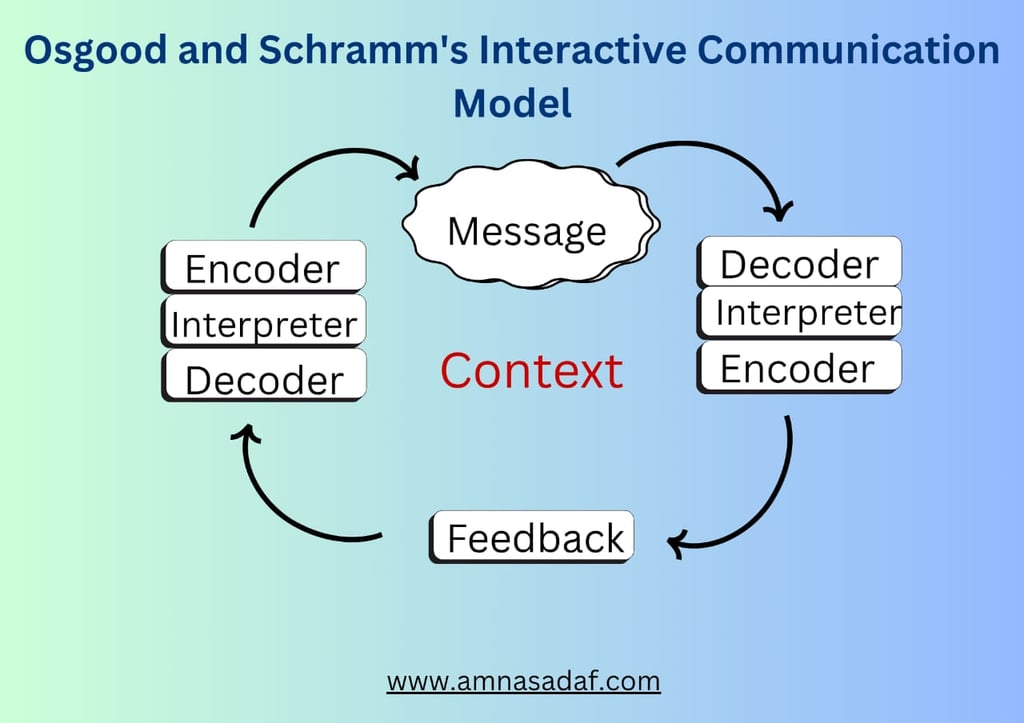Osgood & Schramm's Interactive Communication Model
Explore the "Osgood and Schramm's Communication Model", a key theory in communication studies emphasizing mutual understanding and the continuous nature of communication. Discover its impact on communication. This model is developed by Charles Osgood and Wilbur Schramm.
COMMUNICATION
10/18/20252 min read


Osgood and Schramm's Interactive Communication Model: A Comprehensive Guide.
The Osgood and Schramm Interactive Communication Model is one of the most influential theories in communication studies. Developed by Charles Osgood and Wilbur Schramm, this model emphasizes the interactive and reciprocal nature of communication, where both participants act as senders and receivers simultaneously. It emphasizes that communication is a continual process that involves mutual understanding and response rather than being linear.
Key Elements of Osgood and Schramm’s Model.
Encoder, Decoder, and Interpreter.
Both participants in communication take on three critical roles:
Encoder: The one who converts thoughts, emotions, or ideas into a message.
Decoder: The one who receives and interprets the message.
Interpreter: Assigns meaning to the message based on personal knowledge, emotions, and experiences.
Message.
The content of communication—whether verbal, non-verbal, or written—travels between the participants. Its effectiveness depends on clarity, relevance, and the context in which it is shared.
Feedback.
Feedback is a pivotal element of this model. It ensures that communication is interactive and dynamic rather than one-sided. It allows participants to confirm understanding or clarify the message.
Context.
Communication always occurs within a specific context, which can include physical surroundings, cultural norms, and individual emotions. These factors influence how messages are encoded, interpreted, and decoded.
Features of the Interactive Communication Model.
Circular Process: Unlike linear models, this model illustrates that communication is a circular and continuous flow rather than a one-directional process.
Active Roles: Each participant functions as both the sender and receiver simultaneously.
Feedback Integration: Feedback is central to this model, ensuring that misunderstandings can be resolved in real-time.
Interpersonal and Relational Focus: It emphasizes understanding and shared meaning, making it highly effective for interpersonal communication.
Applications and Importance.
This model is widely applicable in various fields:
Interpersonal Communication: Helps in understanding one-on-one interactions.
Organizational Communication: Used to study effective workplace communication. Media and Marketing: Applied to analyze audience feedback and engagement in advertising campaigns.
Education: Teachers and students interact in a feedback-driven process to enhance learning.
Why Is the Osgood and Schramm Model Relevant?
In today’s fast-paced digital world, effective communication hinges on mutual understanding and active feedback. Whether it's customer engagement on social media or face-to-face conversations, this model helps decode the complexities of human interaction.
© 2025 Copyright Amna Sadaf
